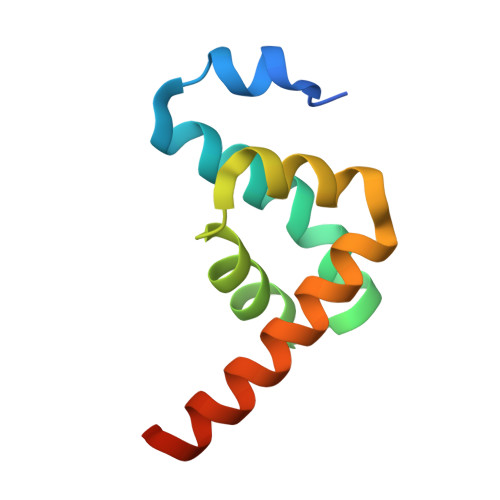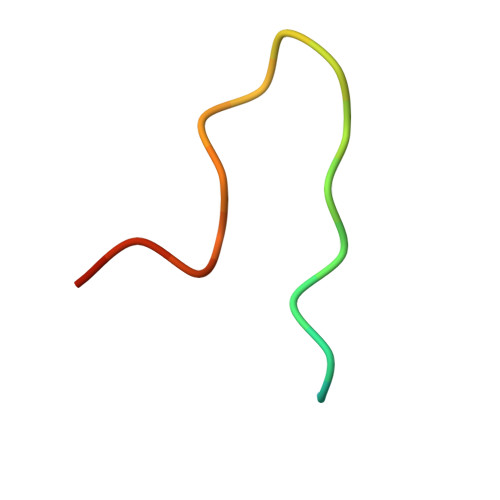Structural basis of binding of P-body-associated proteins GW182 and ataxin-2 by the Mlle domain of poly(A)-binding protein.
Kozlov, G., Safaee, N., Rosenauer, A., Gehring, K.(2010) J Biol Chem 285: 13599-13606
- PubMed: 20181956
- DOI: https://doi.org/10.1074/jbc.M109.089540
- Primary Citation of Related Structures:
3KTP, 3KTR - PubMed Abstract:
Poly(A)-binding protein (PABPC1) is involved in multiple aspects of mRNA processing and translation. It is a component of RNA stress granules and binds the RNA-induced silencing complex to promote degradation of silenced mRNAs. Here, we report the crystal structures of the C-terminal Mlle (or PABC) domain in complex with peptides from GW182 (TNRC6C) and Ataxin-2. The structures reveal overlapping binding sites but with unexpected diversity in the peptide conformation and residues involved in binding. The mutagenesis and binding studies show low to submicromolar binding affinity with overlapping but distinct specificity determinants. These results rationalize the role of the Mlle domain of PABPC1 in microRNA-mediated mRNA deadenylation and suggest a more general function in the assembly of cytoplasmic RNA granules.
Organizational Affiliation:
Department of Biochemistry and Groupe de Recherche axé sur la Structure des Protéines, McGill University, Montréal, Québec H3G1Y6, Canada.















